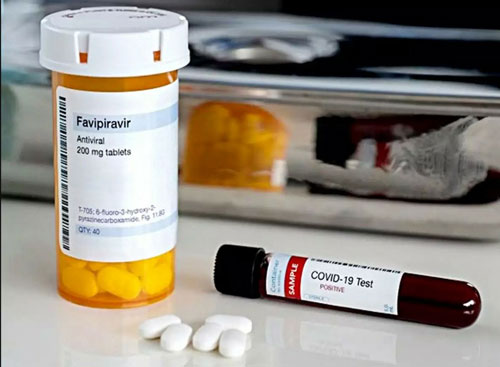RESEARCHERS have found that high doses of a drug called favipiravir strongly inhibit SARS-CoV-2 in hamsters and favipiravir also prevented infection in healthy animals that had exposure to an infected cage mate.
It takes many years to develop a potent antiviral drug from scratch for a particular viral infection. Throughout the pandemic of Covid-19 — the disease that SARS-CoV-2 causes — researchers and clinicians have, therefore, had to focus on repurposing existing drugs.
Early on in the outbreak, one of the consequences of this was the wide administration of the antimalarial drug hydroxychloroquine to seriously ill patients.
In the absence of a proven animal model of Covid-19, doctors were relying on evidence from experiments using cell cultures, which suggested that the drug worked.
In June 2020, however, the first conclusive results from clinical research involving humans revealed that hydroxychloroquine was ineffective.
Virologists at the Rega Institute for Medical Research in Leuven, Belgium, have now developed a model of Covid-19 in Syrian hamsters, which they hope will provide more reliable information before the results of clinical trials become available.
They have already used their animal model to test different doses of favipiravir, an antiviral drug that has had approval in Japan since 2014 to treat pandemic influenza infections.
The researchers found that while low doses of the drug gave poor results against SARS-CoV-2, high doses were effective.
“Other studies that used a lower dose had similar results,” says the senior researcher, Prof. Leen Delang. “The high dose is what makes the difference. That’s important to know because several clinical trials have already been set up to test favipiravir on humans.”
The team has also used the model to confirm that hydroxychloroquine is ineffective.
“Our hamster model is ideally suited to identify which new or existing drugs may be considered for clinical studies,” explains Prof. Johan Neyts, one of the other scientists involved in the research.
“In the early days of the pandemic, such a model was not yet available. At that time, the only option was to explore in patients whether or not a drug such as hydroxychloroquine could help them. However, testing treatments on hamsters provides crucial information that can prevent the loss of valuable time and energy with clinical trials on drugs that don’t work.”









